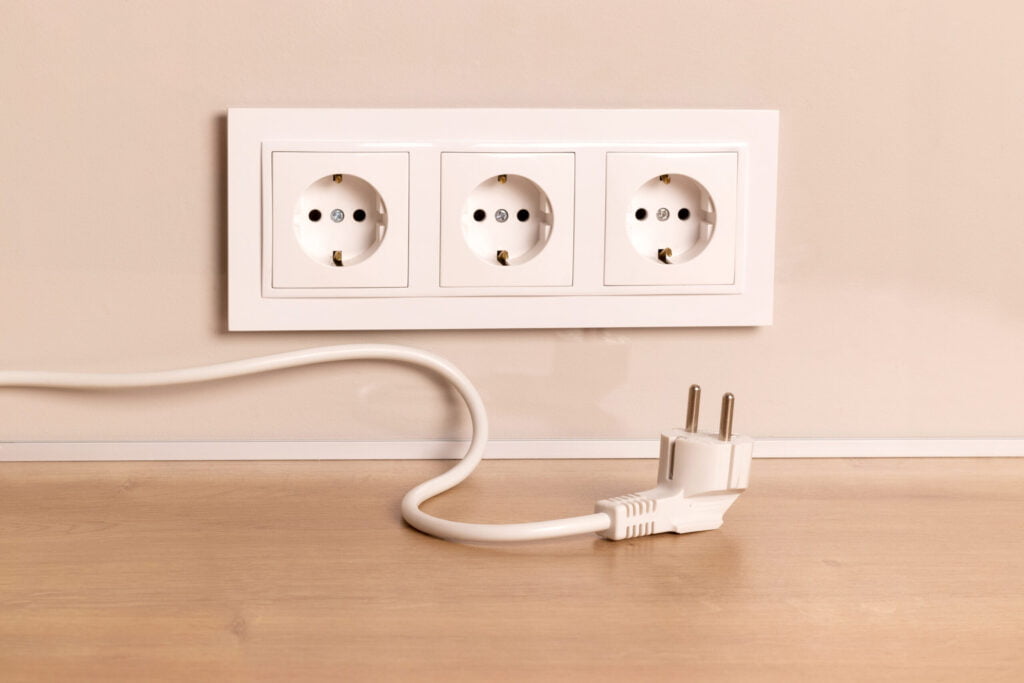The switch to an outlet may seem like an odd idea at first, but the reasons behind this conversion are actually quite practical. Perhaps you’re working on a renovation project, or maybe you just need an extra outlet for your devices. Whatever the case may be, understanding how to undertake this conversion can be a handy skill.
However, it is important to note that electrical repairs can be complex and dangerous, and if you’re unsure of any steps in this process, you should reach out to a professional. A knowledgeable electrician in Austin gave us the expert advice used in this guide, ensuring it’s filled with accurate information to help you navigate this conversion.
Understanding the Task at Hand
To begin with, it’s important to understand what you’re about to embark on. Converting a light switch into an outlet involves switching the wiring so that a constant flow of electricity is delivered to the outlet rather than being regulated by the switch. This requires some familiarity with electrical work and the necessary tools. The job’s complexity varies depending on whether the existing light switch box has a neutral wire. This is necessary for the outlet to function.
The Importance of the Neutral Wire
The neutral wire completes the electrical circuit by providing the path back to the electrical panel. In the case of a light switch, it might be present in the box, but it isn’t usually connected to the switch. However, for an outlet to function correctly, it needs a neutral wire.
If a neutral wire isn’t present in your switch box, the conversion process becomes more complicated. In this case, you would need to route one from the electrical panel or another source, which should be done by a licensed professional to ensure safety and code compliance. Understanding this ahead of time can save you from starting a project you can’t complete and from potential electrical mishaps.
Keeping in Mind the Electrical Codes and Regulations

In addition to safety considerations, you also need to be aware of local electrical codes and regulations. These codes are in place to ensure that electrical work is done safely and correctly. They cover things like how many outlets you can have on a circuit, the correct wire gauge to use, and the acceptable methods for running and securing it.
Doing electrical work without a permit or not following the code can lead to fines and problems when trying to sell your house in the future. It can also pose a fire risk if the electrical repair isn’t done correctly. If you’re unsure about any aspect of your project, it’s a good idea to consult with a professional or your local building department.
Safety First
First and foremost, working with electricity is a serious task, and the highest safety measures should always be adhered to. Before starting, you should shut off the power to the light switch at the circuit breaker. This is the first and most crucial safety step in the process. Once you have done this, it’s a good idea to use a voltage tester to make sure there’s no electricity flowing to the switch. Do not skip this step; ensuring there’s no power will protect you from accidental electrocution.
There are additional steps you can take to ensure your safety. For instance, using insulated tools can provide an additional layer of protection against electrical shock. You can also wear rubber-soled shoes and safety glasses. In addition, never touch the terminals of the outlet or any exposed wires, even if you believe the power is off. Always use a voltage tester to confirm there’s no electricity flowing to the switch before starting work. Safety should never be compromised when dealing with electricity.
Gathering the Necessary Tools
Before starting the conversion process, you’ll need to gather the necessary tools. This usually includes a screwdriver, strippers, pliers, a voltage tester, and, of course, a new outlet and an outlet cover. Depending on the condition of the wires in your switch box, you might also need some connectors and electrical tape. Having these tools at hand will make your job easier and ensure you can handle any situations that might arise during the conversion process.
Assessing the Wiring Situation
Once you’ve gathered your tools and shut off the power, you’re ready to start. First, remove the light switch’s faceplate by unscrewing it. This will expose the switch and the wiring behind it. Take a look at the wires. The color of them can give you a clue about their function: typically, black or red ones are hot, white ones are neutral, and bare copper or green ones are ground wires.
To function properly, an outlet needs a hot, neutral, and ground wire. If you see all three in your switch box, you’re good to go. If there’s no neutral wire, the conversion will be more complicated, and you might want to consider searching for the “best residential electricians near me.”
Converting the Switch to an Outlet

Assuming you have each of the above, you can proceed to convert the switch into an outlet. Start by unscrewing the switch from the box and disconnecting the wires. You’ll notice screws on the sides of the new outlet: the brass screws are for the hot wire, the silver screws are for the neutral one, and the green screw is for the ground one.
Starting with the ground wire, attach each to the corresponding screw on the outlet. Make sure to loop it around each screw in a clockwise direction before tightening it. This ensures a solid connection. Once all are connected, gently push the outlet into the box and secure it with screws. Finally, attach the outlet cover.
Once you’ve finished the conversion, go back to the circuit breaker and turn the power back on. Using your voltage tester, confirm that the outlet is receiving power and that it is wired correctly.
Finishing Up and Troubleshooting
At this point, you should have successfully converted a light switch into an outlet. However, electrical work can sometimes result in unexpected issues. If your new outlet isn’t working, or if the power doesn’t come back on after you’ve flipped the circuit breaker, it’s time to troubleshoot.
First, double-check your connections. Make sure the hot, neutral, and ground wires are all connected to the correct screws and that none of them have slipped loose. If everything looks correct but you’re still having problems, it may be time to call a professional. There might be an issue elsewhere in your electrical system that is beyond the scope of a DIY project.
The Finishing Spark: Converting Light Switch to Outlet
Undertaking a project to convert a light switch into an outlet can be a rewarding experience. It allows for more versatility in the use of your electrical system, and it’s a great opportunity to get a little bit more familiar with how your home’s electricity works. However, remember that safety always comes first, and if you’re ever uncertain about any part of the process, don’t hesitate to call in a professional. The world of electrical work is complex, but with a careful approach, proper tools, and respect for the inherent dangers, it’s a world that’s open to any determined homeowner.




